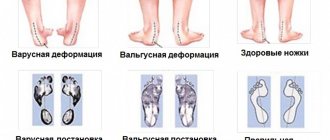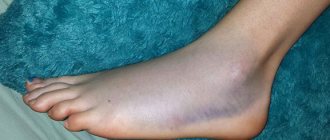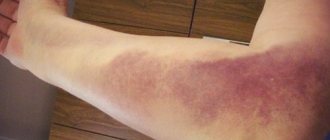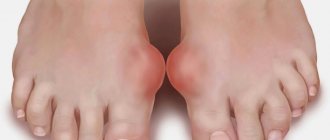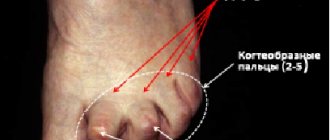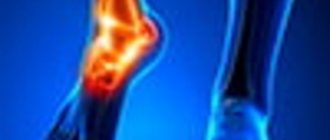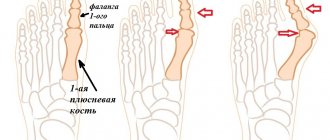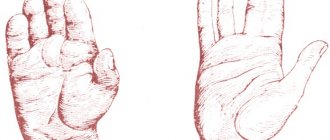After a hard day, a woman often notices how swollen and sore the bone on her big toe is. This is an alarming signal - because the bone may swell further and grow to such an extent that medications and ointments will no longer help. Measures must be taken to cure the disease at an early stage.
Why does the bone swell?
A disease such as hallux valgus does not just spoil the appearance. Often the bone also swells, which causes pain. Calluses and chafing appear, the skin turns red. And in the most severe cases, purulent accumulations form under the skin. Exacerbations develop due to the fact that the bone is subjected to excessive load and pressure. Therefore, the risk factors for developing another attack are as follows:
- Flat feet (body weight is incorrectly distributed on the foot);
- Narrow, uncomfortable shoes that rub the bone on the side;
- High heels (when wearing them, the entire body weight goes into the metatarsal bone);
- Overweight;
- Prolonged standing or walking, carrying heavy objects;
- Traumatic effects;
- Arthrosis and arthritis of the joints of the foot.
- Female gender - among men, swelling of the bone is practically not found.
Swelling of the thumb is also the first symptom of hallux valgus. At this point, you need to think about preventive measures, otherwise the bone may grow further. Many patients do not pay attention to the first swellings, and this is in vain - after all, in an advanced stage, the disease may require surgical intervention.
For any changes in bones, cartilage and ligaments, treatment should begin as early as possible. After all, if you leave everything to chance, pathologies will only progress. At the same time, the treatment of diseases such as bunions requires a large investment of time and effort.
To slow down the disease, you will need regular exercise therapy, massage treatments, and weight loss. The bone is much easier to respond to preventive and therapeutic measures in the early stages.
Any of the methods of treatment and pain relief discussed in this article is only part of complex therapy. Only a doctor can tell why the bone began to swell and how to treat it correctly.
Causes of pain in the bunion of the big toe
The appearance of hallux valgus is preceded by a number of circumstances, most of them related to the lack of necessary foot care.
The main reasons for the appearance of a bone at the base of the thumb:
- incorrectly chosen or poorly made shoes - mostly these are too tight shoes that significantly compress the foot;
- improper diet, as a result of which the body does not receive a full set of nutrients - pathology can also arise due to an excess of any elements;
- heredity - if someone in the family already had such a problem, then hallux valgus deformity is highly likely to appear;
- the presence of diseases of the musculoskeletal system;
- insufficient physical activity.
Women are 10 times more likely than men to suffer from hallux valgus, as their bodies are more strongly influenced by hormones. In addition, women have a more flexible ligamentous apparatus, which also has a great influence on the growth of the bone.
On a note! Representatives of the fair sex, in pursuit of fashion trends, often wear very uncomfortable shoes, although they are spectacular. Following the rule “beauty requires sacrifice,” the female half of humanity significantly (literally several times) increases the risk of bursitis. Currently, 40% of women in the world are faced with this problem.
Very often the joint is deformed due to excess weight, flat feet, frequent and prolonged walking, and diseases of cartilage tissue.
The disease is often diagnosed in people who professionally engage in gymnastics and dancing, as well as in those who must stand on their feet for a long time. Sometimes women observe the development of pathology during pregnancy or menopause, since at this time a hormonal imbalance occurs in the body. In some cases, the bunion begins to grow due to a leg injury.
It happens that children suffer from hallux valgus, although very rarely. This occurs due to the presence of diseases: rickets, poliomyelitis, excessive joint mobility.
Bone growth occurs in those who suffer from gout and arthritis. Quite often, hallux valgus is confused with other diseases, despite the presence of characteristic symptoms. Therefore, only a doctor can accurately make the correct diagnosis.
Nonsteroidal anti-inflammatory drugs
Even when the bone swells for the first time, most often this indicates the presence of an inflammatory process. And if pain occurs due to inflammation, doctors most often recommend taking non-steroidal anti-inflammatory drugs. These remedies are known to everyone - Diclofenac, Ibuprofen, Nise, even regular Aspirin. They not only relieve pain, but also fight its cause - inflammation.
It is also necessary to use such drugs because the inflammation of the bone does not simply go away. Any inflammatory process, when the bone swells, leads to the fact that the joints are destroyed under its influence. And in the future they become much more vulnerable, become deformed, and cease to withstand the load - the bone grows even more and swells even more often.
The disadvantage of non-steroidal anti-inflammatory drugs is that they negatively affect the digestive system. Even if absorbed through the skin in the form of ointments and gels. This effect is minimized by modern developments - the so-called “coxibs”. Their group includes, for example, the drug Celecoxib.
Antibiotics
To defeat purulent formation during inflammation of the lump, you will need to take antibiotics. You cannot engage in self-diagnosis and self-medication here. Only a doctor can select the appropriate drug. Moreover, he will first need to find out which microorganism is to blame for the appearance of a purulent lump. Testing is carried out, diagnostics show which infectious agent will need to be destroyed.
The method of using antibiotics also varies - in the form of tablets, ointments containing an antibiotic. In particularly severe situations, antibiotics are injected directly into the area of the inflamed lump on the leg. The drugs are usually prescribed from the penicillin series. If the patient suffers from an allergic reaction to penicillin, macrolides are used. External use of ointment on the area of the inflamed lump is good because it minimizes the overall harm to the body caused by antibiotics.
External means
An emergency measure to relieve pain and swelling is ointment with menthol. Cold affects the nerves in such a way that they are distracted from pain and calm down. They act quickly.
To relieve inflammation and swelling, you can use modern Valgusstop ointment. It not only relieves inflammation and pain, but also pumps blood into the affected area. Thanks to this, joints and ligaments receive more nutrients. This means they gain strength, become stronger and are less susceptible to harmful stress.
The ointment “Shark oil and laurel” has proven itself well. With its help, you can defeat congestive processes that lead to the swelling of the big toe bone. The ligaments become elastic again and the pain goes away.
A mixture of 2 ml of Chlorophyllip and 1 ml of Dimexide quickly helps against pain. Mix the substances until smooth, moisten a cotton pad with the resulting essence and keep it on the bone for half an hour. During periods of exacerbation, you can use the product daily.
A gel made from the Bischofite mineral kills microbes that could cause the bump on the big toe to swell.
Which doctor should I contact?
To conduct a high-quality diagnosis, and then effective treatment, it is necessary to seek help when the first symptoms of the disease appear. In this case, the following may help:
- surgeons - with a focus on treating joints;
- arthrologists - doctors who treat joints;
- rheumatologists will help diagnose and conservatively treat inflamed joints.
- traumatologists - if there is deformation, they can provide assistance.
There is no need to delay treatment of joint inflammation; such a pathological condition can lead to undesirable consequences that significantly worsen the quality of life.
Therapeutic plasters
As soon as the bunion near your big toe is swollen and painful, apply a medicinal patch to it. This treatment is not universal; in the later stages it will only help against pain. But if used at the very beginning of the disease, the patch can stop its further progress. The market offers a huge number of different patches, and the most famous of them is pepper. Several generations of women have experienced its positive influence. And now many other, no less effective new products have appeared - for example, a magnetic patch.
Pepper plasters are applied to the bone near the thumb as soon as it hurts. You need to keep it for about two days - during this time the skin and joints will absorb all the necessary substances. Pepper irritation will improve blood circulation, deformed tissues will be able to fight inflammation. The nerves will stop transmitting pain signals to the brain.
Chinese plasters are made from medicinal plants, famous in traditional medicine of the Celestial Empire. They can be used not only as a whole sheet, but also in small pieces - gluing them to each biologically active point near the cone.
A variation of the Chinese patch is the magnetic patch. At the production stage, its medicinal substances, also of plant origin, are exposed to a magnetic field and infrared rays. This way they become more efficient.
Folk compresses
This is not the first generation of women to suffer from such a disease as a bunion on the big toe. And many recipes were invented for pain and swelling, for example:
- Iodine is one of the most famous remedies for swollen bones. Mix iodine and two analgin tablets to a very thick consistency. Place the mixture on the bone, wrap the foot with a thick cloth on top or put on a wool sock. To make the warming effect stronger, we “pack” the foot in cellophane. It will be enough to apply a compress once a week so that the bone stops swelling and hurting;
- Mix salt and honey in equal proportions, put the mixture on the bone, wrap it in cellophane, and then put on a wool sock. We use the compress every day until the pain goes away;
- We make a warm foot bath in the basin, first adding ½ ml of iodine and a teaspoon of soda. Steam your feet for 20 minutes. We wipe our feet and spread iodine on the bone. On top are a sheet of paper and warm socks. Let's go to bed. Can also be used daily.
Your review of the article - please rate it below: ( 375 ratings, average: 4.48 out of 5)
